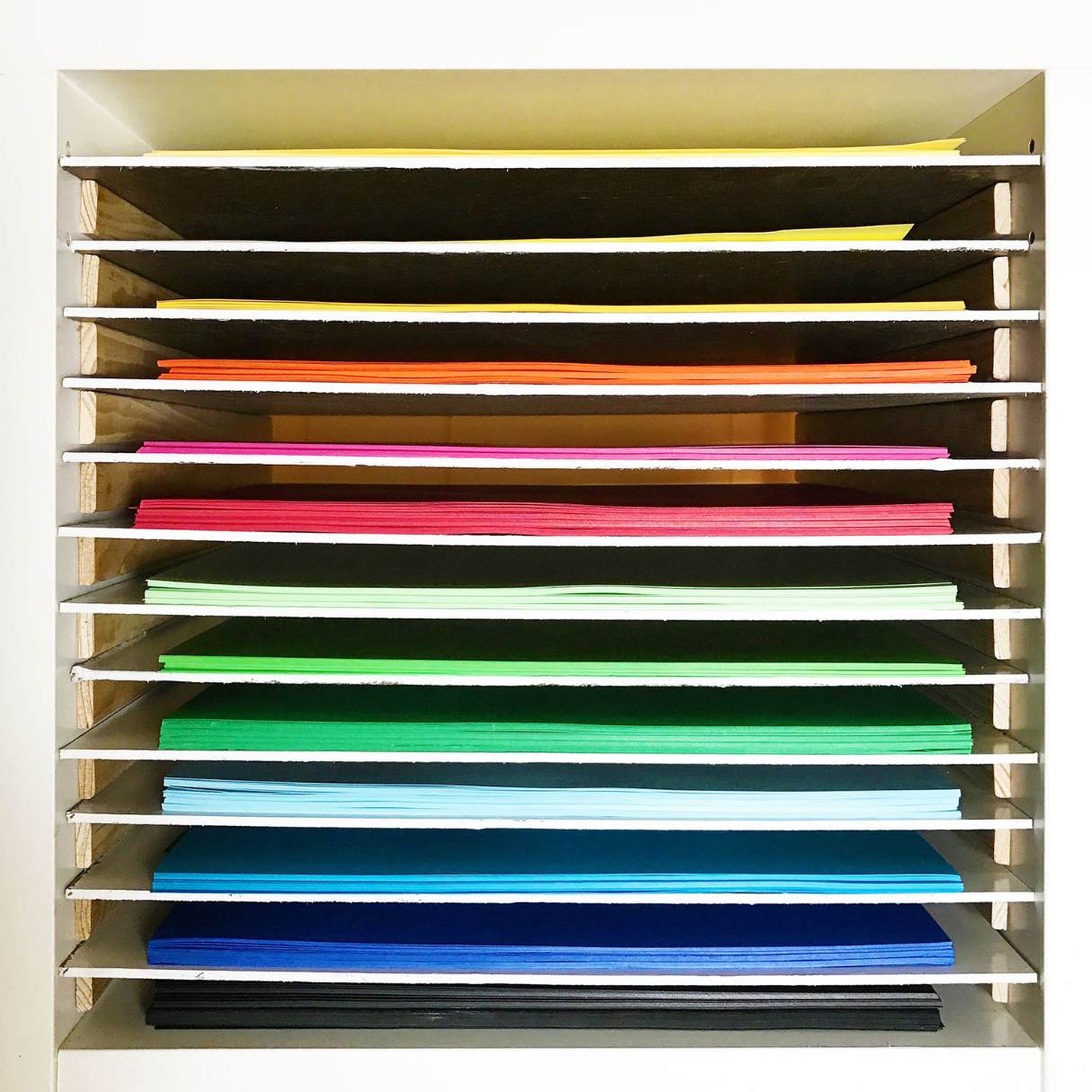

Articles
How To Store Large Art Paper
Modified: January 19, 2024
Learn how to store large art paper and keep your articles safe and pristine. Find tips and tricks for proper storage to prevent damage and maintain quality.
(Many of the links in this article redirect to a specific reviewed product. Your purchase of these products through affiliate links helps to generate commission for Storables.com, at no extra cost. Learn more)
Introduction
When it comes to preserving large art paper, proper storage is essential to ensure its longevity and protect it from damage. Whether you are an artist with a collection of oversized creations or a curator responsible for storing valuable artworks, following the right storage practices is crucial. This article will guide you through the process of storing large art paper, from selecting the right storage space to handling and preparing the paper for storage, as well as different methods of storage depending on the type of art paper.
Storing large art paper poses unique challenges due to its size and fragility. Improper storage can lead to creases, tears, discoloration, or even mold growth, which can significantly diminish the value and beauty of the artwork. By adhering to proper storage techniques, you can ensure that your large art paper remains in pristine condition for years to come.
In this comprehensive guide, we will explore different aspects of storing large art paper, including selecting the right storage space, choosing appropriate containers, handling and preparing the paper for storage, and different methods of storage depending on the specific requirements of your art paper. Additionally, we will cover important topics such as protecting art paper from environmental factors, preventing damage and deterioration, maintaining and cleaning art paper, and more.
Whether you are a professional artist, an art collector, or simply someone who appreciates large art paper, this article will equip you with the knowledge and strategies to store your precious artworks effectively. By implementing the tips and techniques shared in this guide, you can ensure that your large art paper remains safe, preserved, and ready to be admired for generations to come.
Key Takeaways:
- Proper storage of large art paper is crucial to prevent damage. Select the right storage space, choose appropriate containers, and handle the paper with care to ensure its longevity and protection.
- Protecting art paper from environmental factors and implementing preventive measures are key to preserving its quality and ensuring its longevity. Regular maintenance and proper handling techniques contribute to the artwork’s long-term preservation.
Read more: How To Store Large Paintings
Selecting the Right Storage Space
Choosing the right storage space for your large art paper is crucial for its preservation. Here are some factors to consider when selecting a suitable storage space:
- Climate control: Art paper is highly sensitive to fluctuations in temperature and humidity. Ideally, the storage space should have a controlled environment with temperature and humidity levels kept constant. Avoid areas prone to extreme temperature changes, such as attics or basements.
- Avoid direct sunlight: Exposure to direct sunlight can cause art paper to fade and deteriorate over time. Choose a storage space that is away from windows or install UV-filtering curtains or blinds to protect the paper from harmful UV rays.
- Sturdy and level flooring: Ensure that the storage area has a sturdy and level flooring to prevent any potential damage to the art paper. Uneven surfaces or floors prone to dampness can lead to bending or warping of the paper.
- Space requirements: Consider the size and quantity of your large art paper. Ensure that the storage space can accommodate the dimensions of your artwork without any constraints or need for folding or bending.
- Accessibility: It is important to have easy access to your stored art paper, especially if you frequently need to retrieve or view them. Consider the layout of the storage space and ensure that you can easily reach and handle the artworks without any risk of damage.
- Security: Protecting your valuable art paper should be a top priority. Choose a storage space that provides adequate security measures, such as locked doors, surveillance cameras, and fire protection systems.
There are various options to consider when selecting the right storage space for your large art paper. These include:
- Art storage facilities: Specialized art storage facilities often provide climate-controlled environments, high levels of security, and professional handling services. These facilities are designed to cater to the specific needs of preserving valuable artworks.
- Home storage: If you choose to store your large art paper at home, consider dedicating a specific room or area solely for storage purposes. Ensure that the chosen space fulfills the aforementioned criteria, such as climate control and adequate security.
- Custom-built storage: For collectors or artists with extensive large art paper collections, custom-built storage solutions can be considered. Working with professional storage experts or contractors, you can design storage racks, shelves, or cabinets that meet your specific requirements.
By selecting the right storage space for your large art paper, you are taking the first step towards ensuring its preservation and protection. Investing time and effort in finding an appropriate storage environment will go a long way in maintaining the quality and integrity of your valuable artworks.
Choosing Appropriate Containers
When it comes to storing large art paper, selecting the appropriate containers is essential to ensure its protection from external elements and physical damage. Here are some factors to consider when choosing containers for your art paper:
- Size and dimensions: The containers should be spacious enough to accommodate the size and dimensions of your large art paper without excessive folding or bending. It is best to choose containers that allow the art paper to lay flat or be rolled up without any strain.
- Material: Opt for containers made of acid-free and archival-grade materials. Acidic containers or materials can cause deterioration and yellowing of the art paper over time. Acid-free containers help maintain the pH balance and prevent chemical reactions that could harm the paper.
- Sturdiness: Ensure that the containers are sturdy enough to withstand any pressure or impact during storage and handling. Fragile containers can lead to accidental damage or collapse, endangering the art paper within.
- Light-blocking properties: Consider containers that provide protection against light exposure. Light-blocking properties can prevent fading and discoloration of the art paper, preserving its original colors and integrity.
- Sealability: Look for containers that offer airtight or moisture-resistant sealing. This will provide an extra layer of protection against environmental factors such as humidity, dust, and pests.
- Transparency: Clear containers or those with transparent viewing windows can be beneficial for easy identification and organization of art paper. This allows you to see the contents without having to open each container.
There are several types of containers that you can consider for storing your large art paper:
- Flat storage boxes: These boxes are designed specifically for storing flat artworks. They are available in various sizes and are often made of acid-free materials. Flat storage boxes provide adequate protection and support for large art paper, preventing bending or creasing.
- Archival sleeves or envelopes: These acid-free sleeves or envelopes are ideal for storing individual pieces of large art paper. They can be used for both flat or rolled-up artworks, providing a protective barrier against dust, light, and moisture.
- Art portfolios: Art portfolios are large, flat cases with handles or straps for easy transportation. They come in various sizes and are designed to hold multiple pieces of art paper. Look for portfolios made of archival materials to ensure the preservation of your artwork.
- Flat file cabinets: Flat file cabinets are specifically designed for storing large flat artworks. These cabinets feature numerous drawers that can hold multiple art paper sheets. They provide a secure and organized storage solution while allowing easy access to individual pieces.
- Art racks: For rolled art paper, consider investing in art racks. These are vertical storage systems that can accommodate multiple rolled artworks, keeping them safely stored and easily accessible. Make sure the racks are made of sturdy materials and provide sufficient support for the rolled art paper.
Remember to label your containers appropriately, indicating the contents and any necessary handling instructions. This will ensure easy identification and minimize the risk of mishandling your valuable large art paper.
By choosing the appropriate containers for storing your large art paper, you are taking a significant step towards safeguarding its integrity and ensuring its longevity.
Handling and Preparing the Art Paper for Storage
Proper handling and preparation of your art paper before storing it is crucial to prevent damage and ensure its longevity. Here are some essential steps to follow:
- Clean hands: Always ensure that your hands are clean and dry before handling art paper. Oils, dirt, or moisture on your hands can transfer onto the paper and cause staining or deterioration over time. If necessary, wear gloves made from cotton or nitrile to provide an extra layer of protection.
- Clear workspace: Prepare a clean and clutter-free workspace to handle the art paper. Clear any sharp objects, liquids, or potential hazards that could accidentally damage the paper.
- Remove accessories: Remove any clips, pins, or fasteners from the art paper before storage. These items can cause indentations or tears if left attached during storage.
- Inspect for damage: Before storing the art paper, carefully examine it for any existing damage, such as tears, folds, or stains. Take note of any issues and consider repairing them before storage to prevent further deterioration.
- Protective covering: If your art paper is susceptible to smudging or scratching, consider using a protective covering. This can be a sheet of acid-free tissue paper or glassine paper placed between the layers of the art paper to prevent unwanted contact or abrasion.
- Flattening techniques: If the art paper has bends or creases, you can gently flatten it by placing heavy, flat objects on top for a period of time. Alternatively, you can use a suitable flattening technique, such as humidifying the paper and using a weighted board to press it flat. Consult a professional conservator for advice on the best method for your specific art paper.
- Labeling: Before placing the art paper into its container, label it with relevant information such as the artist’s name, title of the artwork, date, and any other important details. This will aid in identification and organization when retrieving the paper in the future.
It is important to handle the art paper with care to avoid unnecessary damage. When moving or transporting the paper, support it from underneath with both hands to distribute the weight evenly and prevent bending or creasing.
Take the time to properly prepare your art paper before storage, and ensure that it is in the best condition possible. By following these handling and preparation guidelines, you can minimize the risk of damage and preserve the quality of your large art paper for years to come.
Storing Art Paper Flat
Storing art paper flat is a preferred method to prevent creasing, bending, and other forms of damage. Here are some guidelines to follow when storing your large art paper flat:
- Choose a flat storage surface: Select a clean and level surface for storing your art paper. It should be sturdy enough to support the weight of the paper without any risk of sagging or bending. Avoid storing art paper on the floor or any surfaces that are prone to moisture or temperature fluctuations.
- Use acid-free supports: Place acid-free supports underneath and on top of the large art paper. These supports can include acid-free foam boards, archival mat boards, or acid-free cardboard. They provide additional protection and help distribute the weight evenly, preventing any areas of concentrated pressure.
- Use interleaving sheets: If you are storing multiple sheets of art paper together, place acid-free interleaving sheets between each sheet. These sheets act as a barrier, preventing the artworks from sticking to each other or transferring any colors or materials.
- Avoid overcrowding: Do not stack too many art paper sheets on top of each other, as excessive weight can cause damage. If you need to store a large amount of art paper, consider using multiple storage containers or flat file cabinets to distribute the weight evenly.
- Rotate the paper: Periodically rotate the art paper to prevent long-term pressure on specific areas. This helps to alleviate the risk of bending or warping, particularly for artworks stored for an extended period of time.
- Protective covering: If necessary, cover the exposed art paper with acid-free tissue or glassine paper. This provides an additional layer of protection against dust, light, and potential contact damage.
- Keep a stable environment: Maintain a stable climate for your art paper storage area. Avoid sudden fluctuations in temperature or humidity, as these can cause the paper to expand or contract, leading to warping or other forms of damage.
It is important to regularly inspect stored art paper for any signs of damage, such as mold, pests, or discoloration. If you notice any issues, take appropriate measures to address them promptly to prevent further deterioration.
By following these guidelines, you can ensure that your large art paper remains in excellent condition while stored flat. Storing art paper correctly not only protects the artworks from damage but also allows for easy access and retrieval whenever needed.
Read more: How To Store Paper Artwork
Hanging Art Paper
Hanging art paper is an alternative storage method that can be suitable for certain types of large artworks. Here are some guidelines to follow when hanging your art paper:
- Choosing the right hanging system: Select a hanging system that is appropriate for the weight and size of your art paper. Opt for sturdy rods or rails that can support the weight of the paper without sagging or causing damage.
- Secure hanging hardware: Use proper hanging hardware, such as hooks or clips, that are suitable for the type of art paper you are hanging. Ensure that they are securely attached to the wall or hanging surface to prevent accidents or damage.
- Protective handles: Attach acid-free, archival-grade handles to the edges of the art paper. These handles make it easier to handle and hang the artwork without directly touching the paper, reducing the risk of smudging or damage.
- Spacing between artworks: Allow enough space between each piece of hanging art paper to prevent them from touching and potentially causing damage to one another. The recommended space is typically 1-2 inches between each artwork.
- Light control: Ensure that the hanging area is well-lit but avoid direct sunlight. Exposure to sunlight can fade and damage the art paper over time. Consider using UV-filtering window film or curtains to protect the artworks from harmful UV rays.
- Regular maintenance: Regularly inspect the hanging art paper for any signs of damage, such as tears, creases, or loose attachments. Address any issues immediately to prevent further deterioration.
- Proper hanging height: Hang the art paper at an appropriate height, keeping in mind the viewing comfort and aesthetic considerations. Ensure that the paper is securely fastened and level to maintain its integrity while on display.
- Rotation of artworks: Rotate the hanging art paper periodically to avoid prolonged exposure to light and pressure. This will help to ensure even aging and prevent any potential damage caused by extended display in one position.
Hanging art paper allows for easy viewing and appreciation of the artwork without the need for constantly retrieving it from storage. However, it is important to assess whether hanging is suitable for your particular type of art paper. Consider factors such as the weight, fragility, and condition of the paper before opting for this storage method.
By following these guidelines, you can hang your large art paper safely and securely, turning it into a captivating display while ensuring its longevity and protection from damage.
Store large art paper flat in a clean, dry area to prevent warping or damage. Use acid-free paper or interleave with acid-free tissue to protect the paper from yellowing or deterioration.
Using Tubes for Rolled Art Paper
Using tubes for storing rolled art paper is a practical and space-efficient method, especially for larger artworks. Here are some guidelines to follow when using tubes for your rolled art paper:
- Select the right tube: Choose a tube that is larger in diameter than the width of your rolled art paper. This allows sufficient space and prevents any undue pressure on the artwork when it is stored inside.
- Use acid-free materials: Opt for acid-free tubes made from archival-grade materials. Acidic materials can cause damage to the art paper over time, leading to discoloration or deterioration.
- Secure the ends: Ensure that both ends of the tube are securely sealed to protect the art paper from dust, moisture, and pests. Cap the ends with plastic or metal caps specifically designed for art storage tubes.
- Protective covering: Consider wrapping the rolled art paper with acid-free tissue or glassine paper before placing it inside the tube. This provides an additional layer of protection against scratches or abrasions.
- Labeling: Label each tube with relevant information such as the artist’s name, title of the artwork, and date. This allows for easy identification and organization when retrieving or storing multiple tubes.
- Proper storage position: Store the tubes vertically, standing them upright on their sealed ends. This helps to prevent any potential crushing or collapsing of the tube while ensuring easy access and retrieval.
- Storing the tubes: Find a cool, dry, and stable storage area to keep the tubes. Avoid extreme temperature fluctuations and high humidity levels that can lead to mold growth or damage to the art paper.
- Regular inspection: Periodically inspect the rolled art paper inside the tubes for any signs of damage or changes in condition. Be vigilant for issues such as moisture build-up or pest infestation and address them promptly.
- Unrolling with caution: When unrolling the art paper from the tube, do so carefully and gently to avoid any creasing or tearing. Lay the paper flat on a clean and flat surface, taking care to keep it supported and protected.
Using tubes for storing rolled art paper is a practical solution, particularly for larger artworks or limited storage spaces. It allows for easy storage, transport, and retrieval of the art paper while protecting it from potential damage.
By following these guidelines, you can properly utilize tubes for your rolled art paper, ensuring its preservation and allowing for convenient access whenever you wish to view or use the artwork.
Protecting Art Paper from Environmental Factors
Art paper is highly susceptible to damage from various environmental factors. To preserve the quality and longevity of your large art paper, it is important to take measures to protect it from these elements. Here are some key environmental factors to consider and ways to safeguard your art paper:
- Light: Exposure to sunlight and certain artificial light sources can cause art paper to fade, discolor, or become brittle over time. Minimize the exposure by placing the art paper in areas away from direct sunlight. If displaying the artwork, use UV-filtering glass or acrylic to reduce the amount of harmful UV rays that reach the paper.
- Humidity: Fluctuations in humidity levels can lead to the expansion and contraction of art paper, resulting in warping, buckling, or mold growth. Maintain a stable humidity level between 40-55% to prevent damage. Use dehumidifiers or humidifiers to regulate humidity if necessary.
- Temperature: High temperatures can accelerate the aging process and cause art paper to become brittle, while low temperatures can lead to moisture condensation and mold growth. Store your art paper in a climate-controlled environment with temperatures ranging between 65-75°F (18-24°C).
- Air quality: Exposure to pollutants, dust, and airborne particles can degrade art paper over time. Keep the storage area clean and free from dust. Consider using air purifiers or filters to maintain good air quality in the storage space.
- Moisture: Excessive moisture or dampness can cause art paper to distort, become weak, or develop mold. Store your art paper in a dry area with proper ventilation to prevent moisture build-up. Use moisture absorbers or desiccant packets to maintain a dry environment.
- Pests: Insects and rodents can cause significant damage to art paper. Regularly inspect the storage area for signs of infestation and take appropriate measures to prevent pests, such as using pest repellents or traps.
Proper storage techniques, as discussed earlier in this article, can also help protect art paper from environmental factors. By storing the paper in climate-controlled areas, using acid-free materials, and avoiding direct exposure to light, you can significantly enhance its preservation.
Remember to periodically check your stored art paper for any signs of damage, such as discoloration, mold growth, or pest activity. Promptly address any issues to prevent further deterioration.
By diligently safeguarding your large art paper from environmental factors, you can ensure its long-term preservation and enjoy its beauty for years to come.
Preventing Damage and Deterioration
Preventing damage and deterioration of your large art paper is crucial for its long-term preservation. By implementing preventive measures, you can protect your artwork from potential hazards and ensure its longevity. Here are key tips to prevent damage and deterioration:
- Handling with care: Handle your art paper with clean, dry hands to avoid transferring oils, dirt, or moisture onto the surface. Be cautious when moving or transporting the paper, supporting it from underneath with both hands to prevent creasing or bending.
- Storage methods: Store your large art paper in appropriate containers, such as flat storage boxes, archival sleeves, portfolios, or rolled in tubes. Choose acid-free and archival-grade materials to prevent chemical reactions and maintain the pH balance of the paper.
- Avoid excessive handling: Minimize unnecessary handling of your art paper to reduce the risk of damage. The more the paper is touched and exposed to external elements, the higher the likelihood of wear and tear.
- Protect from light: Limit exposure to direct sunlight and artificial light sources, as they can cause fading and discoloration over time. Store or display your artwork in areas with controlled lighting or use UV-filtering materials to block harmful UV rays.
- Control temperature and humidity: Maintain a stable environment with optimal temperature and humidity levels to prevent warping, mold growth, or brittleness. Keep the temperature between 65-75°F (18-24°C) and humidity levels between 40-55%.
- Protective barriers: Use acid-free tissue or glassine paper to provide a protective layer between stacked art paper sheets or when wrapping rolled paper. These barriers help prevent sticking, transfer of colors, or scratches.
- Avoid contact with moisture: Keep your art paper away from sources of moisture or excessive humidity as it can lead to molding, staining, or weakening of the paper fibers. Store it in a dry environment with proper ventilation.
- Regular inspection: Check your art paper regularly for any signs of damage, such as discoloration, tears, or pests. Inspect both the surface and the storage containers to identify any issues early and take appropriate action.
- Conservation methods: Consider consulting a professional conservator for specific conservation techniques, such as flattening, repairing tears, or applying protective coatings. These methods can help restore and preserve the art paper, especially if it has sustained damage.
Taking these preventive measures and staying proactive in the care of your large art paper will go a long way in preserving its quality and ensuring its longevity. Remember that prevention is key when it comes to protecting valuable artworks.
Additionally, if you are unsure about proper conservation techniques or handling methods for your art paper, it is always recommended to seek advice from professionals with expertise in art conservation or preservation.
Read more: How To Store Construction Paper
Maintenance and Cleaning of Art Paper
Maintaining and cleaning your art paper is an important part of its overall preservation. By following proper maintenance and cleaning techniques, you can ensure that your large art paper remains in excellent condition. Here are some guidelines to help you maintain and clean your art paper:
- Regular inspections: Routinely examine your art paper for any signs of damage, discoloration, or pests. Inspect both the front and back of the paper, as well as any storage containers or frames, to identify any issues early on.
- Handling with care: Always handle your art paper with clean and dry hands to avoid transferring oils, dirt, or moisture onto the surface. When handling fragile or delicate paper, consider wearing gloves made from cotton or nitrile to provide an extra layer of protection.
- Display and storage conditions: Ensure that your art paper is stored or displayed in a controlled environment, with stable temperature and humidity levels. Avoid areas prone to extreme temperature fluctuations, high humidity, or direct sunlight to prevent damage.
- Proper framing: If you choose to frame your art paper, make sure to use acid-free matting, backing boards, and archival-grade materials. This helps to create a protective barrier between the artwork and external elements, as well as prevent discoloration or staining over time.
- Minimize touching the surface: Limit touching the surface of your art paper as much as possible, as the natural oils from your fingers can leave residue and lead to smudging or staining. If necessary, use a clean, lint-free cloth or soft brush to gently remove any dust or debris.
- Assembling and disassembling: If you need to handle or assemble multiple pieces of art paper, take caution to avoid friction or rubbing between the artworks. Place a clean barrier, such as acid-free tissue or glassine paper, between the surfaces to prevent any unwanted transfers of color or materials.
- Cleaning methods: Only clean your art paper if necessary and after consulting with a professional conservator. Improper cleaning techniques can cause irreversible damage. It is best to seek expert advice for specific cleaning methods, especially for delicate or valuable art paper.
- Professional conservation: If your art paper requires cleaning or restoration beyond your expertise, consult a professional conservator. They have the knowledge and tools to carefully clean, repair, or restore art paper while preserving its integrity and value.
Remember, prevention is key in maintaining art paper. By implementing proper handling and storage procedures and conducting regular inspections, you can minimize the need for extensive cleaning or restoration.
If you have any concerns or questions about the cleaning or maintenance of your art paper, it is always advisable to seek professional advice. They can provide personalized guidance based on the specific materials and condition of your art paper, ensuring its longevity and ensuring it remains in excellent condition for years to come.
Conclusion
Preserving large art paper involves careful handling, proper storage, and regular maintenance. By following the guidelines outlined in this article, you can ensure the longevity and protection of your valuable artworks. Selecting the right storage space, choosing appropriate containers, and handling the art paper with care are essential steps in preventing damage and deterioration.
Whether you choose to store your art paper flat, hang it, or use tubes for rolled storage, each method has its own benefits and considerations. Regardless of the method you choose, it is crucial to protect your art paper from environmental factors such as light, humidity, temperature, and pests. Additionally, proper maintenance and cleaning techniques help keep your art paper in optimum condition for years to come.
Regular inspections, careful handling, and using archival-grade materials can significantly contribute to the preservation of art paper. If cleaning or restoration is necessary, always consult a professional conservator to ensure that the process is carried out correctly and does not cause any further damage.
By prioritizing the protection and proper care of your large art paper, you are safeguarding its artistic value and historical significance. Whether you are an artist, collector, or enthusiast, these preservation techniques allow you to enjoy and appreciate your art paper for generations to come.
Remember, each piece of art paper is unique, and it is important to tailor preservation practices based on individual requirements and characteristics. By combining knowledge, best practices, and professional advice, you can create a safe and secure storage environment for your large art paper, enhancing its beauty and value for years to come.
Frequently Asked Questions about How To Store Large Art Paper
Was this page helpful?
At Storables.com, we guarantee accurate and reliable information. Our content, validated by Expert Board Contributors, is crafted following stringent Editorial Policies. We're committed to providing you with well-researched, expert-backed insights for all your informational needs.

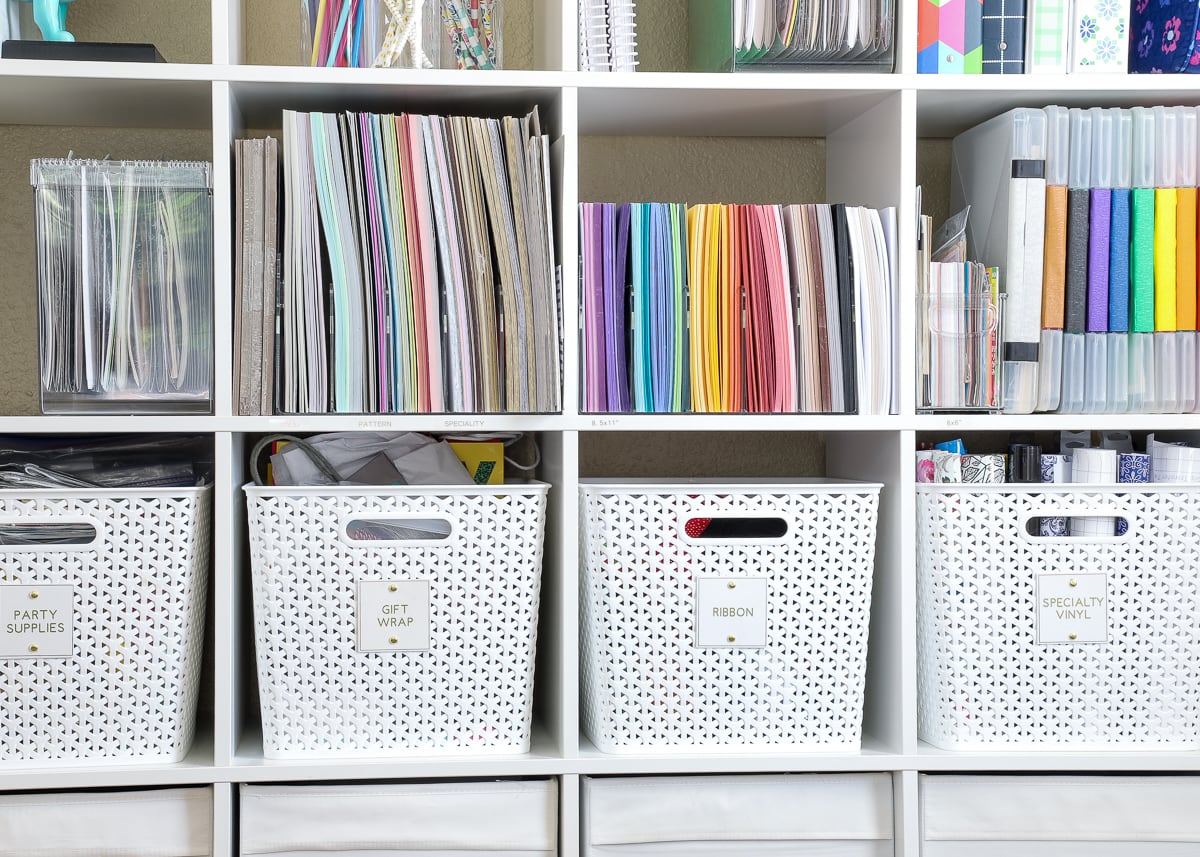
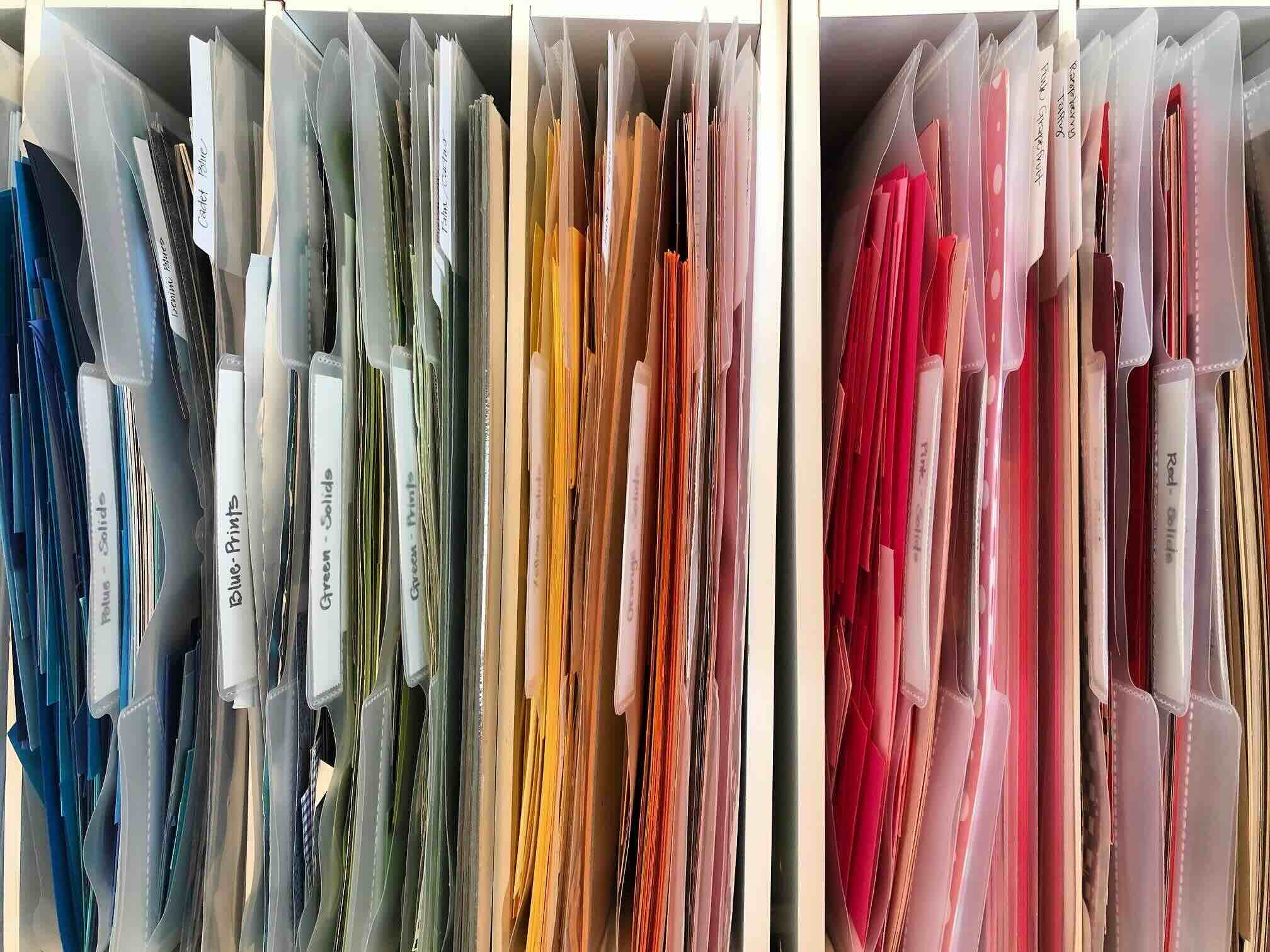

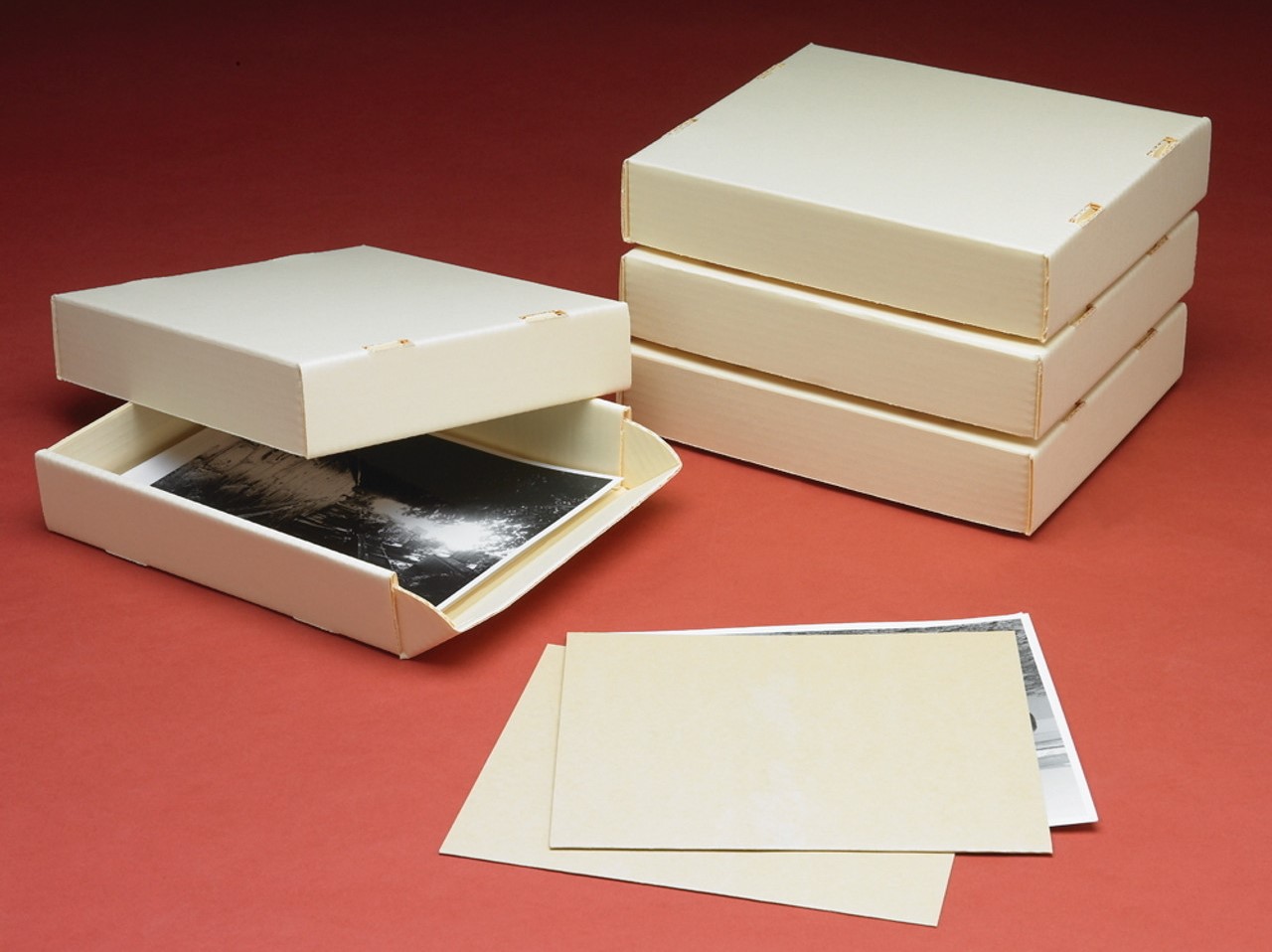

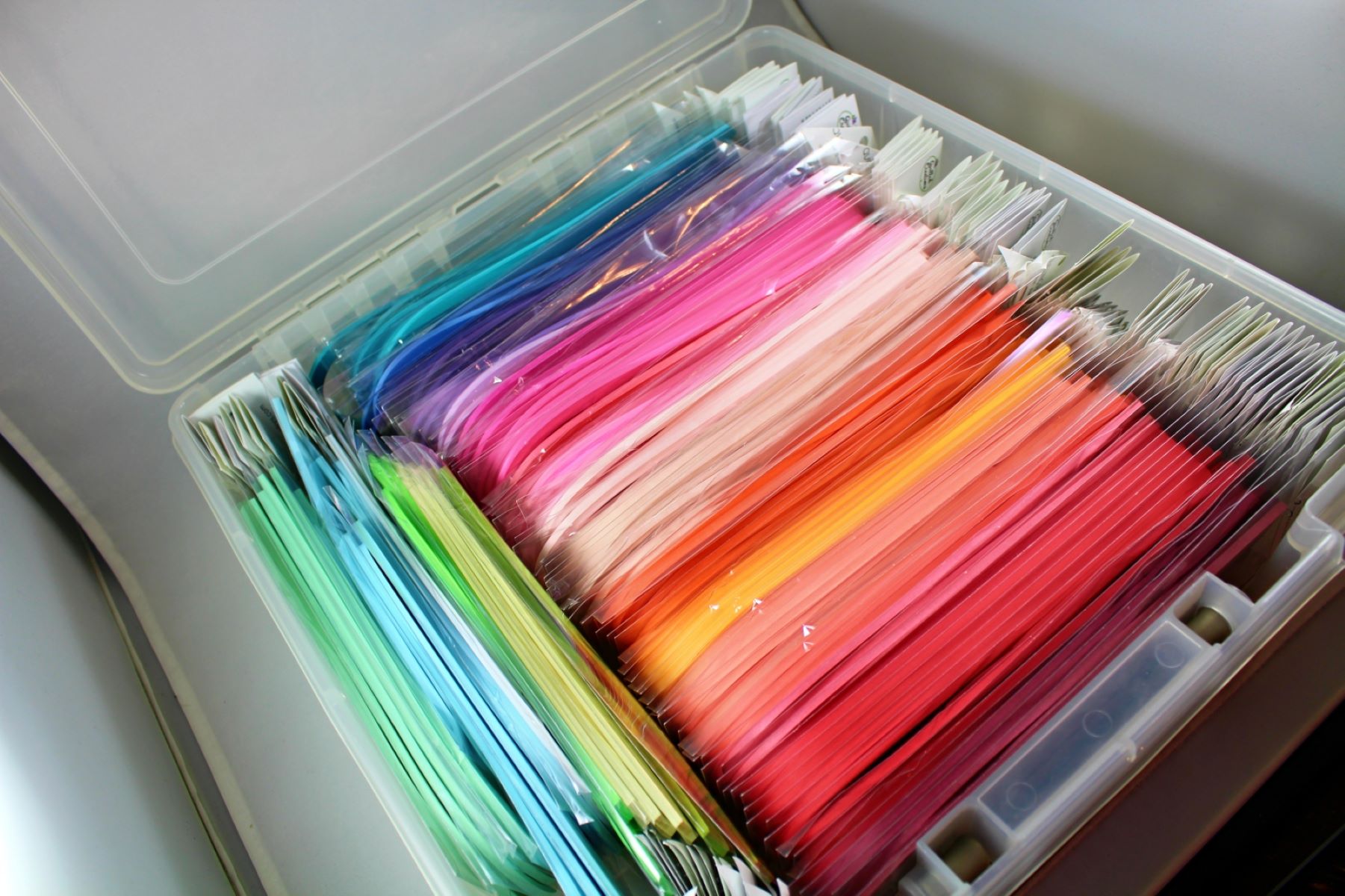

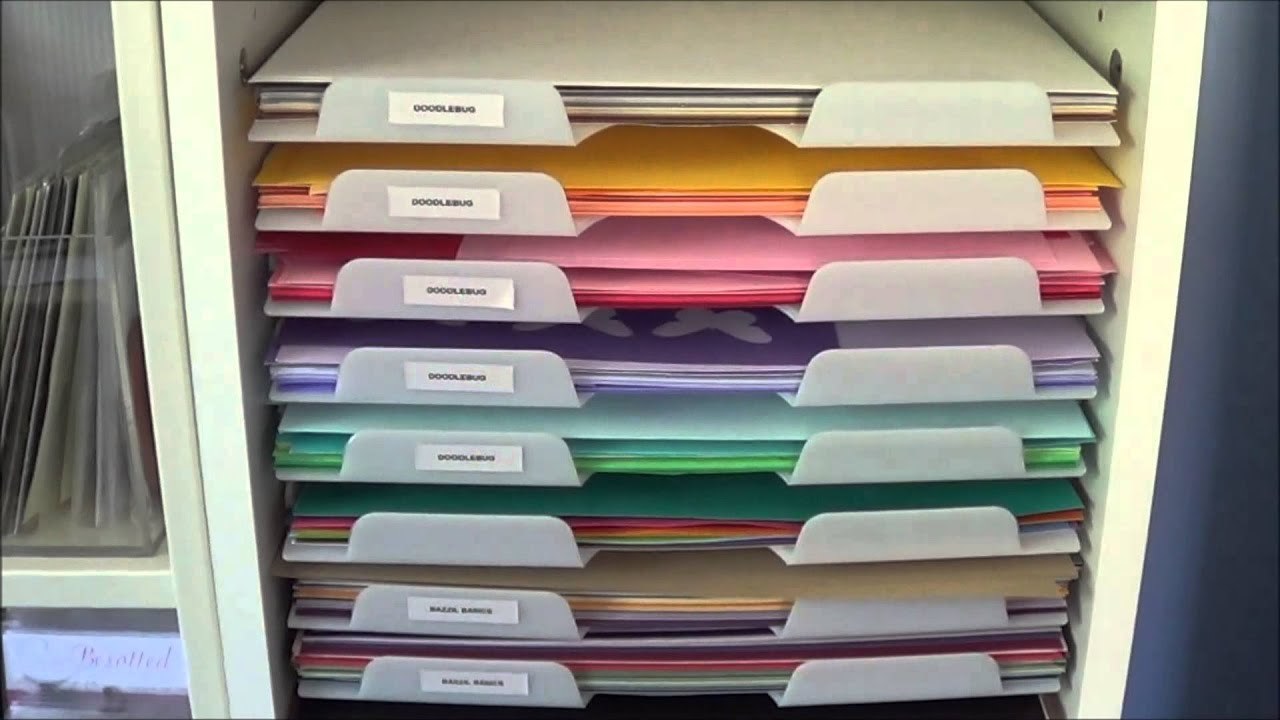
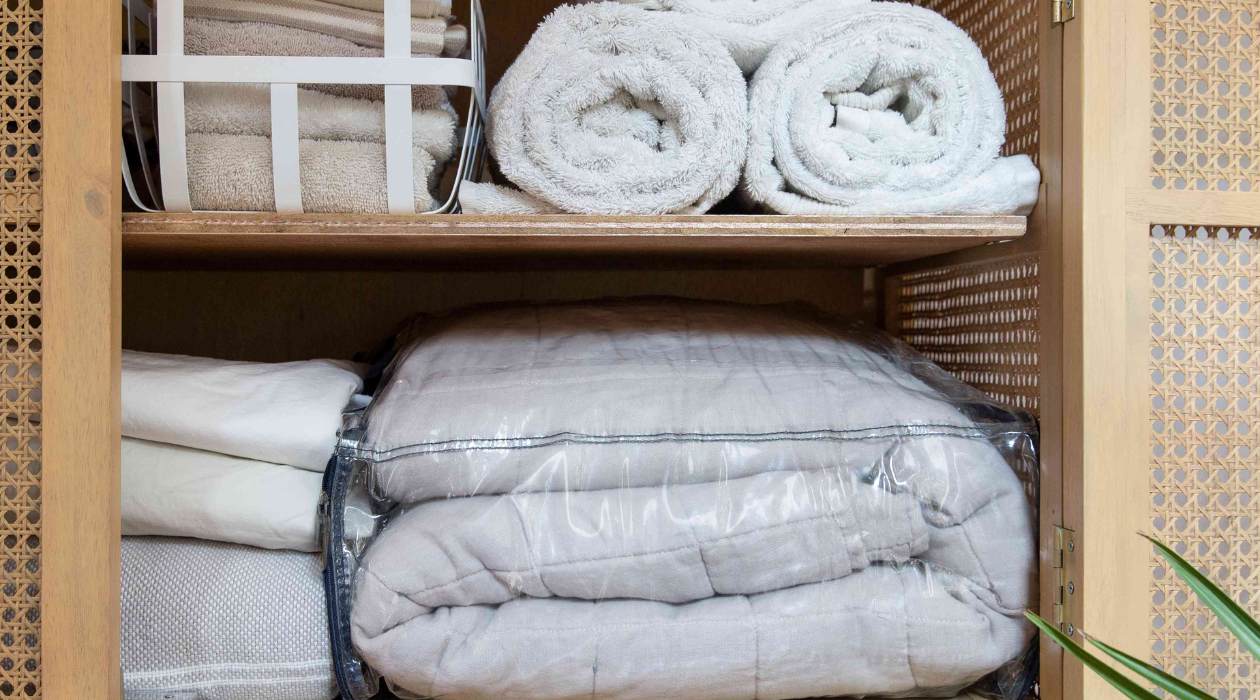




0 thoughts on “How To Store Large Art Paper”